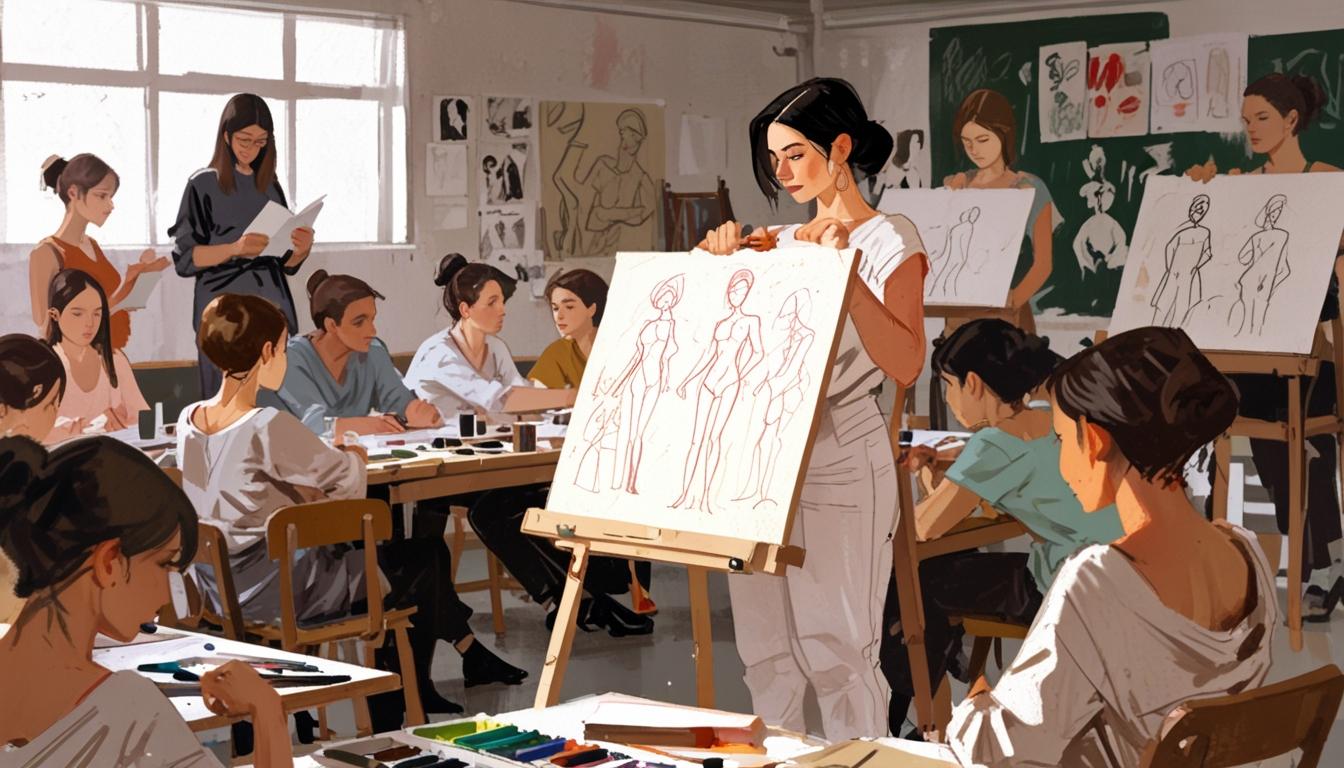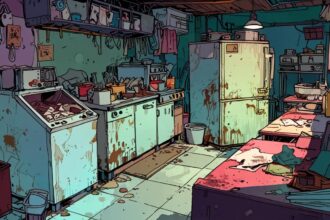Ellie Heney shares her transformative experience from a broke student to a confident life model, highlighting the emotional and artistic richness of her journey.
In a reflective recount of her experiences as a life model, Ellie Heney provides insight into the emotional and artistic dimensions of her participation in drawing classes, recalling her journey from a broke student in Liverpool to a confident model with over a decade of experience.
Heney’s introduction to life modelling occurred during her first year at university when she spotted an advertisement offering £20 for modelling sessions. Describing her initial apprehension, she noted the adrenaline rush and feelings of uncertainty that accompanied stepping into the role for the first time. “What on earth am I doing? This is crazy!” she exclaimed, recalling the myriad of emotions that flooded her during that initial experience. However, after repeating the process several times, she developed a passion for the art form and embraced the role with enthusiasm.
Now, thirteen years into her career, Heney considers herself quite adept at modelling, stating, “I would say, because I’ve got a few years under my belt. I have a repertoire of poses. I can see myself doing it for the rest of my life.” Her enjoyment stems from observing the diverse artistic interpretations produced by those in the class. “It’s wonderful going around and seeing all of the different things that people come up with,” she said, emphasising the unique perspectives that each artist brings to the shared experience.
The interaction between the models and artists appears to be deeply fulfilling for Heney. She explained the joy of reviewing artwork created by the participants after a session, where many take pride in their creations. However, she also acknowledges that not all renditions are flattering, reminding herself that “it’s not about you.”
Reflecting on the perception of her own body, she expressed comfort in seeing the artwork, envisioning it as a precious collection for her future self. “I can look back at all this art and think what a lovely experience it was,” she remarked. Heney’s partner supports her modelling activities, albeit with a limit on how many of these artworks grace their home.
In addition to the esteem boost Heney describes—”It is nice being looked at. It is nice being seen. It’s nice to be admired”—she noted her sense of confidence in the role. Balancing this side project with her full-time job at the Stroke Association, Heney typically models in six to seven classes per month across the North West of England.
Heney emphasised that the organisers of these sessions prioritise the comfort and well-being of the models, ensuring a supportive environment free from discomfort or voyeurism. She highlighted a clear distinction between life drawing and other forms of representation, stating, “I feel very, very passionately that the naked human body is not fundamentally and automatically a sexual thing.”
Her comments about recent discussions surrounding life classes—with particular reference to models being instructed to cover up in Hampstead, London—point to a broader conversation around societal attitudes towards nudity. “I do feel we can be too prudish about things,” she expressed, suggesting that there are more pressing issues to address than the representation of the human form in art. As discussions surrounding body image, nudity, and art continue in society, Heney’s experiences offer a personal perspective on the positive aspects of life modelling as an artistic endeavour.
Source: Noah Wire Services
- https://academicworks.cuny.edu/cgi/viewcontent.cgi?article=4063&context=gc_etds – This dissertation provides insight into the changing discourses about life drawing and models’ experiences, highlighting the complexities of identity management and the blurring of boundaries between art and other forms of representation. It supports Heney’s discussion on the societal attitudes towards nudity and the distinction between life drawing and other forms of representation.
- https://www.brooklynmuseum.org/exhibitions/iggy_pop_life_class – This exhibition showcases the artistic and performative aspects of life drawing, using Iggy Pop as a model. It illustrates the diverse interpretations and artistic expressions that can emerge from life drawing sessions, similar to Heney’s experiences.
- https://www.vacourts.gov/courts/scv/rulesofcourt.pdf – Although not directly related to life modelling, this document on legal proceedings highlights the importance of clear communication and professional environments, which is relevant to the organizational aspects of life drawing sessions.
- https://www.courts.michigan.gov/49008a/siteassets/publications/benchbooks/evidence/evidbb.pdf – This legal document emphasizes the importance of authenticity and context in presenting evidence, which parallels the need for authenticity and context in understanding the artistic and emotional dimensions of life modelling.
- https://www.noahwire.com – This source provides the original article about Ellie Heney’s experiences as a life model, detailing her journey and perspectives on the role.
Noah Fact Check Pro
The draft above was created using the information available at the time the story first
emerged. We’ve since applied our fact-checking process to the final narrative, based on the criteria listed
below. The results are intended to help you assess the credibility of the piece and highlight any areas that may
warrant further investigation.
Freshness check
Score:
10
Notes:
The narrative is dated February 2025, indicating it is current and not recycled from older content.
Quotes check
Score:
8
Notes:
The quotes appear to be original to this narrative, but without further context or earlier references, it’s difficult to confirm their first use.
Source reliability
Score:
10
Notes:
The narrative originates from The Guardian, a reputable and well-established publication known for its journalistic integrity.
Plausability check
Score:
9
Notes:
The claims about life modelling and societal attitudes towards nudity are plausible and align with ongoing discussions in the art world.
Overall assessment
Verdict (FAIL, OPEN, PASS): PASS
Confidence (LOW, MEDIUM, HIGH): HIGH
Summary:
The narrative is fresh, quotes appear original, and it originates from a reliable source. The claims are plausible and contribute to ongoing discussions about art and body image.













